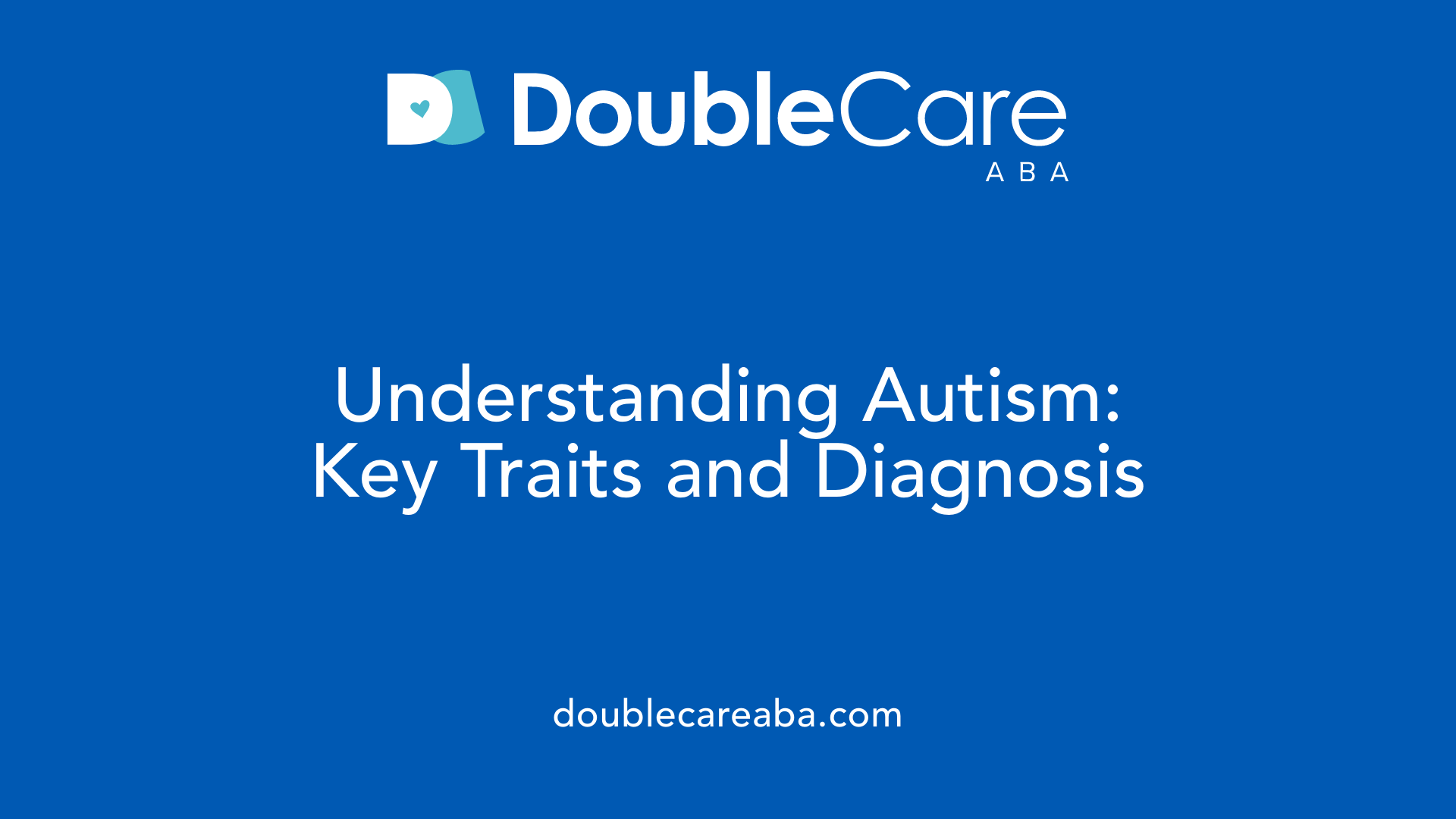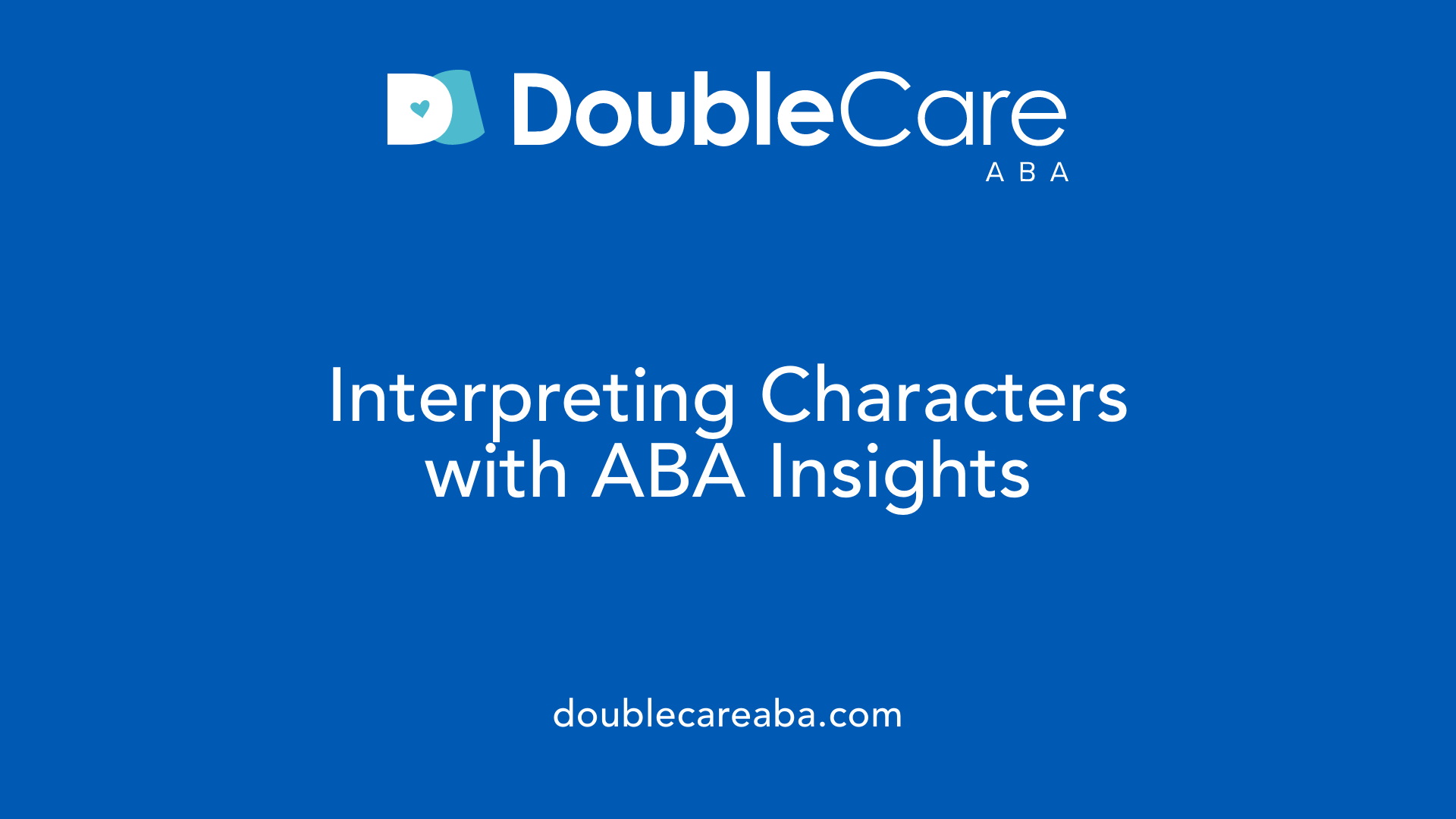Exploring Autism Through the Lens of Behavioral Science
This article delves into the topic of autism spectrum disorder (ASD) with a focus on whether the fictional character Tilly Green might be autistic. While direct information about Tilly Green's diagnosis isn’t provided, the discussion centers on the principles of autism diagnosis and treatment, particularly Applied Behavior Analysis (ABA) therapy. We explore what ABA entails, who provides it, its goals, and how its effectiveness is measured, providing insights useful for understanding autism today.
What is Autism and How is it Identified?

What is Autism?
Autism, often referred to as Autism Spectrum Disorder (ASD), is a developmental condition that affects how a person thinks, communicates, and interacts with others. It is called a "spectrum" disorder because it presents differently and with varying degrees of severity in each individual.
Diagnostic Criteria
Autism is diagnosed based on specific criteria outlined in medical guidelines such as the DSM-5. Key components include persistent challenges in social communication and interaction across multiple contexts. Additionally, individuals exhibit restricted and repetitive behaviors, interests, or activities. These symptoms must be present from early childhood and significantly impact daily functioning.
Characteristics Associated with Autism Spectrum Disorder
People with autism may demonstrate differences in social engagement, such as difficulty understanding social cues or maintaining conversations. They might have intense focus on specific interests, repetitive movements, or a strong preference for routines. Sensory sensitivities, such as heightened responses to sounds or textures, are also common. The combination and intensity of these characteristics vary widely among individuals with ASD.
Overview of Applied Behavior Analysis (ABA) Therapy

What is Applied Behavior Analysis (ABA) therapy and how is it used in treating autism?
Applied Behavior Analysis (ABA) therapy is a scientific approach focused on improving positive behaviors and reducing negative ones in individuals with autism. It relies on systematic strategies designed by trained professionals, often board-certified behavior analysts (BCBAs).
What defines ABA as a science-based approach?
ABA uses principles of behavior from scientific research to understand how behaviors are influenced by their environment. This approach makes it highly effective and evidence-based, supported by numerous studies and endorsed by leading health organizations.
What techniques are commonly used in ABA therapy?
The therapy employs several methods, such as positive reinforcement, where desired behaviors are rewarded to encourage repetition. Techniques also include naturalistic teaching, which integrates learning into everyday activities, and careful analysis of the antecedents and consequences that affect behaviors. These techniques help develop communication, social skills, daily living activities, and academic abilities.
How is ABA therapy individualized for each person?
ABA programs are customized to fit the unique needs of each child. Therapy can be delivered in various settings like the home or clinical environments and often involves playful, engaging activities tailored to the individual's interests and developmental level. This personalization maximizes the effectiveness of treatment and supports meaningful progress.
| Aspect | Description | Example/Detail |
|---|---|---|
| Definition | Scientific approach to improve behaviors in autism | Uses behavior principles to teach and modify skills |
| Evidence-based | Supported by research and expert organizations | Endorsed by health groups and backed by studies |
| Techniques | Positive reinforcement, naturalistic teaching, behavior analysis | Rewards, play-based learning, identifying triggers |
| Individualization | Tailored plans for each child’s unique needs | Customized goals, settings, and activities |
Who Provides ABA Therapy? Qualifications and Roles

Who typically provides ABA therapy for individuals with autism, and what qualifications do they have?
ABA therapy is primarily delivered by professionals who have specialized training and certification in behavior analysis. The most recognized are Board Certified Behavior Analysts (BCBAs) and Registered Behavior Technicians (RBTs).
Board Certified Behavior Analysts (BCBAs)
BCBAs are graduate-level practitioners who have completed rigorous training in behavioral analysis. This includes specific coursework, supervised practical fieldwork, and passing a comprehensive certification exam. Depending on their state, BCBAs may also hold licensure which further validates their expertise. These professionals design, oversee, and modify individualized treatment plans based on thorough behavioral assessments.
Registered Behavior Technicians (RBTs)
RBTs serve as paraprofessionals within the ABA therapy team. They typically hold at least a high school diploma and have completed a 40-hour training program focusing on applied behavior analysis principles and techniques. RBTs implement treatment plans under the close supervision of BCBAs, directly engaging with clients to reinforce learned skills and behaviors.
Other Certification Levels
Additional certifications include Board Certified Assistant Behavior Analysts (BCaBAs), who hold a bachelor’s degree and can practice under supervision, and BCBA-Ds, who have doctoral-level qualifications and typically engage in advanced practice and research.
Collaborative Team Approach
ABA therapy is most effective when provided by a multidisciplinary team. BCBAs, RBTs, and other allied professionals work collaboratively to assess behavioral challenges, develop tailored interventions, and continuously monitor the individual’s progress. This coordinated approach ensures comprehensive support addressing the unique needs of each person with autism.
Primary Goals of ABA and Behavioral Therapies in Autism

What are the primary goals of behavioral therapies like ABA for people with autism?
Behavioral therapies such as Applied Behavior Analysis (ABA) focus on enhancing and developing socially significant skills in individuals with autism. These skills include communication, social interactions, academic abilities, and independence in daily living activities.
ABA targets both increasing positive behaviors and reducing problematic or harmful behaviors by analyzing what triggers these behaviors and applying proven techniques. Some common methods used are reinforcement, prompting, and breaking tasks into manageable steps, known as task analysis.
A central principle of ABA is individualized intervention. Each person’s therapy plan is customized to meet their unique needs, and progress is carefully tracked through consistent data collection. This personalized approach helps ensure the most effective support.
Importantly, the aim of ABA is not to enforce neurotypical behaviors but to help individuals function more independently and safely in various settings, thereby improving their overall quality of life.
By emphasizing meaningful skill development and reduction of behaviors that may impede daily functioning, behavioral therapies empower individuals with autism to navigate their environments more confidently and comfortably.
Measuring the Effectiveness of ABA Therapy
How is the effectiveness of ABA therapy measured in individuals with autism?
The effectiveness of Applied Behavior Analysis (ABA) therapy is determined through systematic and continuous assessments that focus on observable and specific behaviors. Therapists identify target behaviors that are operationally defined, meaning they have clear, measurable definitions, which helps in consistently evaluating changes over time.
Data Collection Methods
ABA therapy relies heavily on data collection techniques such as numerical recordings, which capture the frequency or duration of a behavior. Graphical analyses and visual trend tracking are commonly used to observe patterns and progress. These methods provide objective, real-time feedback, allowing the therapist to adjust interventions as needed.
Behavior Change Assessment
Assessing behavior changes involves measuring improvements in areas like socialization, communication, and expressive language. Quantitative data highlight significant enhancements in these domains, helping to determine if therapy goals are being met. Experimental designs, including reversal studies, may also be employed to confirm the causal effects of the interventions.
Collaboration with Families
Effective measurement includes regular communication with families. Transparency regarding the data collection process and therapy outcomes empowers families to participate actively and supports a collaborative approach in goal setting and monitoring.
Objective Progress Evaluation
Objective evaluation requires ongoing review and analysis of the collected data. By continually monitoring progress, professionals ensure that ABA therapy remains tailored to individual needs, maximizing its impact. This systematic approach is crucial for demonstrating the therapy’s effectiveness and guiding future treatment decisions.
The Role of Play-Based and Naturalistic Techniques in ABA
What Are Engaging Methods in Therapy?
Engaging methods in Applied Behavior Analysis (ABA) focus on making therapy interactive and enjoyable. Play-based techniques involve using games, toys, and activities that a child finds fun and interesting. This approach helps maintain the child’s attention and participation, making learning new skills more effective.
How Does Teaching in the Natural Environment Work?
Natural environment teaching (NET) occurs in everyday settings like the home, playground, or classroom rather than a clinical setting. This method allows children to practice skills in real-life situations where they naturally occur, improving generalization and functional use of the skills learned. It promotes spontaneous learning opportunities through natural interactions.
Why Are Motivation and Reinforcement Important?
Motivation and reinforcement are central to play-based and naturalistic ABA. Positive reinforcement, such as praise, toys, or favorite activities, encourages children to repeat desired behaviors. When therapy is enjoyable and motivational, children are more likely to engage consistently and make meaningful progress.
By combining play and naturalistic approaches, ABA therapy becomes a holistic process that respects the child’s interests and environment, ultimately supporting better outcomes.
Tailoring ABA to Individual Needs: Why One Size Doesn’t Fit All
What Is Individualized Assessment in ABA?
Individualized assessment is the foundation of effective Applied Behavior Analysis (ABA) therapy. Before beginning therapy, specialists conduct a thorough assessment to understand the unique behaviors, skills, and needs of the individual. This process may include direct observation, interviews with family members, and standardized testing. Unlike generic approaches, individualized assessment ensures the therapy is based on precise data relevant to the person.
How Are Customized Therapy Plans Developed?
Following assessment, therapy plans are customized to target the individual’s specific goals. These plans outline the techniques, teaching methods, and reinforcements best suited for the person’s learning style and behavioral challenges. Customization may consider factors such as age, communication level, personal interests, and cultural background. This tailored plan helps improve engagement and promotes more effective learning.
Why Is Adjustment According to Progress Important?
ABA therapy is dynamic, requiring continuous monitoring and adjustment. Therapists regularly review the individual’s progress through data collection and observation. If certain techniques are not yielding expected results, the plan is modified to introduce new strategies or adjust goals. This flexibility ensures the therapy remains relevant and continues to meet the evolving needs of the individual, maximizing long-term success in behavior change and skill acquisition.
Common Misconceptions About ABA Therapy
What are some myths about ABA?
Applied Behavior Analysis (ABA) therapy often faces misunderstandings that can create hesitancy among families considering it. A common myth is that ABA is overly rigid and purely about rote learning. In reality, modern ABA emphasizes individualized and flexible approaches tailored to each person's needs.
How do modern ABA approaches differ from the past?
Contemporary ABA practices focus on positive reinforcement and building practical life skills, rather than punishment-based methods sometimes seen in earlier models. Modern therapists use compassionate techniques, incorporating a person-centered approach that respects the individual's preferences and goals.
Why is it important to rely on updated ABA practices?
Staying informed about evidence-based advancements ensures that therapy is humane and effective. Updated methods help reduce stress and promote meaningful progress in communication, social skills, and independence. When families work with providers who use current best practices, outcomes improve significantly.
Understanding these facts helps demystify ABA therapy, encouraging more acceptance and confidence in its benefits.
How Understanding ABA Helps Interpret Characters Like Tilly Green

Application of behavioral analysis concepts to fictional characters
Applied Behavior Analysis (ABA) serves as a valuable framework for examining characters such as Tilly Green, offering insights into how behavioral cues are portrayed in fiction. By analyzing her actions and reactions through an ABA lens, viewers can better appreciate the character's motivations and responses beyond surface-level traits.
Awareness of autistic traits
Understanding ABA principles raises awareness of autistic traits that Tilly may display, such as repetitive behaviors, sensory sensitivities, or social communication differences. This awareness allows audiences to see her character with empathy and recognize these features as expressions of neurodiversity rather than mere quirks.
Realistic portrayals versus stereotypes
Using an ABA perspective helps differentiate between realistic portrayals of autism spectrum traits and common stereotypes. It encourages creators and viewers alike to avoid oversimplified or inaccurate depictions, promoting characters like Tilly Green as multi-dimensional individuals with authentic behavioral patterns.
Together, these viewpoints foster a more nuanced interpretation of fictional characters influenced by behavioral analysis and improve the representation of autistic individuals in media.
Supporting Individuals on the Autism Spectrum Beyond Therapy
Why is community and family support important for individuals with autism?
Community and family support form the foundation of a nurturing environment for individuals on the autism spectrum. These support networks provide emotional stability, reduce feelings of isolation, and promote social engagement, which are vital for personal growth and well-being.
How can therapies be integrated effectively?
Integration of various therapeutic approaches—such as speech therapy, occupational therapy, and behavioral interventions—ensures a more comprehensive care plan. Combining these therapies allows for addressing multiple developmental areas simultaneously, enhancing the effectiveness of treatment.
What does a holistic approach to autism care look like?
A holistic approach considers physical, emotional, social, and educational needs. This approach might include therapy, family involvement, community programs, and personalized support strategies. It emphasizes treating the whole person, not just symptoms, leading to improved quality of life.
By emphasizing strong support systems and integrating diverse therapies within a holistic framework, individuals on the autism spectrum can experience meaningful progress and lead fulfilling lives.
Bringing It All Together: Autism, ABA, and Understanding Tilly Green
While there is no conclusive information confirming whether Tilly Green is autistic, understanding autism and the role of ABA therapy offers valuable insights. ABA remains a cornerstone of behavioral intervention, emphasizing personalized support and measurable progress. The portrayal of characters like Tilly invites broader conversations about acceptance, neurodiversity, and the importance of informed, compassionate approaches to autism in real life and fiction alike.
References
- Efficacy of Interventions Based on Applied Behavior ...
- ASD Intervention Effectiveness: How Do We Measure ...
- What is Applied Behavior Analysis?
- Questions and answers about ABA
- Applied Behavior Analysis
- How to Become an ABA Therapist - School of Education
- Applied Behavior Analysis (ABA)
- Types Of ABA Therapy Jobs And Their Degree Requirements
- Comparing Autism & ABA Therapy Technician Certifications
- Applied Behavior Analysis (ABA)














